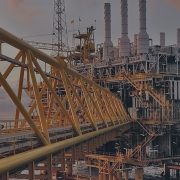Clean Energy threatened by lockdown of critical minerals supply
Clean energy technologies depend on the reliable and growing supply of critical minerals and metals, far more so than the old fossil fuel world. An EV uses five times the quantity needed by a conventional car, and an onshore wind plant requires eight times that of a gas-fired plant of the same capacity. Hence, electric transport and grid storage are now the largest consumers of lithium and cobalt. Examples of rising consumption abound for other materials like copper and nickel. But the Covid lockdown has hit investment in maintaining and expanding supply, creating an obstacle to a clean energy rebound as well as any ambitious roll outs of Green stimuli. This comes on top of the existing problem with the geographical concentration of supply and processing and the geopolitical hazards that go with it. Tae-Yoon Kim and Milosz Karpinski at the IEA run through the challenges, breaking it down by mineral/metal, technology and nation. They end with their recommendations to governments and companies to promote security of supply. Such is its importance that the IEA has decided to step up its analysis of the security of mineral supplies to add to its traditional mandates covering oil, gas and electricity security.
Minerals have played a critical role in the rise of many of the clean energy technologies that are widely used today – from wind turbines and solar panels to electric vehicles. But ensuring that these and other key technologies can draw on sufficient mineral supplies to support the acceleration of energy transitions around the world is a significant and under-analysed global challenge.
Lithium, cobalt and nickel give batteries greater charging performance and higher energy density. Copper is essential for the increasing use of electricity throughout energy systems thanks to its unmatched ability to conduct electric currents. And some rare earth elements such as neodymium make powerful magnets that are vital for wind turbines and electric vehicles.
Mining lockdown
As the Covid-19 pandemic has pushed many countries into some form of lockdown and hit mining operations across the globe, the risks around clean energy supply chains, including those of minerals, have come into sharper focus.
Peru’s copper-mining activities, which are responsible for 12% of global production, ground to a halt because of the country’s confinement measures. South Africa’s lockdown disrupted 75% of the global output of platinum, a key material in many clean energy technologies and emissions control devices, although the country later allowed mines to operate at 50% capacity. Although prices for many important minerals have fallen as global demand has slumped, recent developments have highlighted a number of reasons why the world should not take secure supplies for granted.
Rising clean energy deployment will supercharge demand for critical minerals
Clean energy technologies generally require more minerals than fossil fuel-based counterparts. An electric car uses five times as much minerals as a conventional car and an onshore wind plant requires eight times as much minerals as a gas-fired plant of the same capacity.
Even in fossil fuel-based technologies, achieving higher efficiency and lower emissions relies on the extensive use of minerals. For example, the most efficient coal-fired power plants require a lot more nickel than the least efficient ones in order to allow for higher combustion temperatures.
As deployment of clean energy technologies picks up, demand for critical minerals is set to grow significantly. For some minerals, energy transitions are already the major driving force for demand growth. Since 2015, electric transport and grid storage have quickly become the largest consumers of lithium, together accounting for 35% of total demand today. Likewise, the share of these applications in cobalt demand has risen from 5% to almost 25% over the same period.
Rising prices, volatility
Such rapid growth has put strains on supply, as witnessed by the five-fold increase in cobalt prices between 2016 and early 2018. Although supply has responded, the volatility of prices in recent years has been a wake-up call for companies and governments in terms of the importance of reliable mineral supplies for clean energy transitions.


Geographical concentration of supply and processing means geopolitical hazards
The idea of energy geopolitics is typically associated with oil and gas. By contrast, solar, wind and other clean energy technologies are often seen as immune from such risks. But there are geopolitical hazards associated with the production of many minerals that are essential for energy transitions.
The production of many minerals that are central to energy transitions is more geographically concentrated than that of oil or natural gas. For lithium, cobalt and various rare earths, the top three producers control well over three-quarters of global output. In some cases, a single country is responsible for around half of worldwide production.
The concentration of refining operations is also high, with China alone accounting for some 50% to 70% of global lithium and cobalt refining. China also holds a dominant position along the entire rare earths value chain. It is responsible for 85% to 90% of the processing operations that convert mined rare earths into metals and magnets1.
This creates a source of concern for companies that produce solar panels, wind turbines and batteries using imported minerals, as their supply chains can quickly be affected by regulatory changes, trade restrictions – or even political instability in a small number of countries.
The Democratic Republic of the Congo (DRC), for example, nearly tripled the royalty rate on cobalt in 2018 by classifying it as a “strategic” substance. Indonesia banned nickel ore exports starting this year. And China’s attempt to limit rare earths exports in 2010 had significant repercussions on the market. Geopolitics will therefore remain a wild card even in an electrified, renewable-rich energy world.
Concerns over ethical mining practices
In addition, current extraction practices in some cases are inefficient, unsafe, polluting and subject to social protests. Some 20% of cobalt production in the DRC relies on “artisanal” miners who extract minerals with rudimentary tools in hazardous conditions2. Rare earth processing involves large amounts of harmful chemicals and produces high volumes of solid waste and wastewater, which are not always appropriately handled. These pose additional challenges for stable sourcing of minerals amid growing social and environmental concerns.

Covid lockdown: Delayed or curtailed investments in minerals supply
Over the past few weeks, many companies have delayed or slashed their budgets for planned investments as a result of a prolonged crisis and low prices. Early data suggest that new project approvals are slowing and that annual exploration budgets are likely to fall by 30% compared with 2019, which will have longer-term implications for supply3. These spending cuts are disproportionately affecting new mines or new entrants to the market, limiting the scope for buyers to diversify sources of supply or localise supply chains.
The impacts of investment cuts vary by mineral. But some, especially copper and nickel, could soon feel strains when demand recovers. Demand and supply of copper and nickel were delicately balanced before the pandemic, and there were expectations that supply imbalances might emerge in the coming years.
Could shortages cause problems for Green stimulus plans?
Short-term pressures have weakened with the contraction in demand caused by the Covid-19 crisis. But both minerals could see demand grow rapidly as the world emerges from the crisis and boosts efforts to accelerate energy transitions, especially if many governments put renewables and batteries at the heart of their economic stimulus packages. Given that many of the copper and nickel mines operating today are near their peak production stage, there is a need to ensure adequate investment in new mines to meet rising demand for copper and nickel as well as other minerals that are produced as by-products.
Key challenges around supply of selected minerals

A renewed focus on mineral supplies is vital for accelerated energy transitions
As the deployment of clean energy technologies accelerates, most of their cost elements are likely to fall further, benefitting from technology learning and economies of scale. However, costs for minerals may well move in a different direction if investments fail to keep up with demand growth, sending ripples along the entire supply chain.
These issues should be put in context. An oil supply crisis has broad repercussions for all vehicles that run on it. A shortage or price spike of a mineral required for producing batteries affects only the supply of new battery-powered vehicles to the market, not the operation of every electric vehicle on the road. However, there is a risk that price volatility for minerals could delay clean technology deployment in many areas – a possibility the world can ill afford, given the urgency of reducing emissions.
There are a number of actions that governments and companies can take to promote security of mineral supplies:
- Conduct periodic assessments of the demand and supply prospects for critical minerals to inform strategies aimed at ensuring security of supply. The strategies could also incorporate lessons from traditional energy security frameworks while acknowledging the unique nature of mineral resources, which require additional approaches to limit the impact of supply disruptions (e.g. long-term contracts and strategic partnerships).
- Ensure timely investment in new mines, especially for those where current spending levels are not sufficient to cover projected long-term demand. This would require strong policy signals about the speed of energy transitions and the deployment of key technologies.
- Importing countries need to strengthen the management of end-of-life products and components to promote recycling or retrieval of valuable minerals. This should happen well before solar panels, wind turbines and batteries approach the end of their lifetimes and cause waste volumes to grow exponentially. Stepping up research and development efforts and deploying results at large scale in recycling, substitution and material efficiency would also bring substantial environmental and security benefits.4
- Countries producing minerals need to ensure that their resources are developed in a responsible and environmentally friendly manner. Mining companies can be part of the solution for combating climate change by putting in place stringent emissions targets.
In light of the critical importance of minerals for enabling a sustainable energy future, the IEA is stepping up its analysis of the security of mineral supplies to complement its traditional mandates covering oil, gas and electricity security. As a next step, the complex links between energy and minerals will be explored in detail in the World Energy Outlook. The energy sector is changing quickly: as energy transitions move higher up government agendas, policy makers need to be ready for new conversations about energy resources and energy security.
***
Tae-Yoon Kim is a WEO Energy Analyst at the IEA
Milosz Karpinski is an Energy Analyst at the IEA
Source: https://energypost.eu/clean-energy-threatened-by-lockdown-of-critical-minerals-supply/


